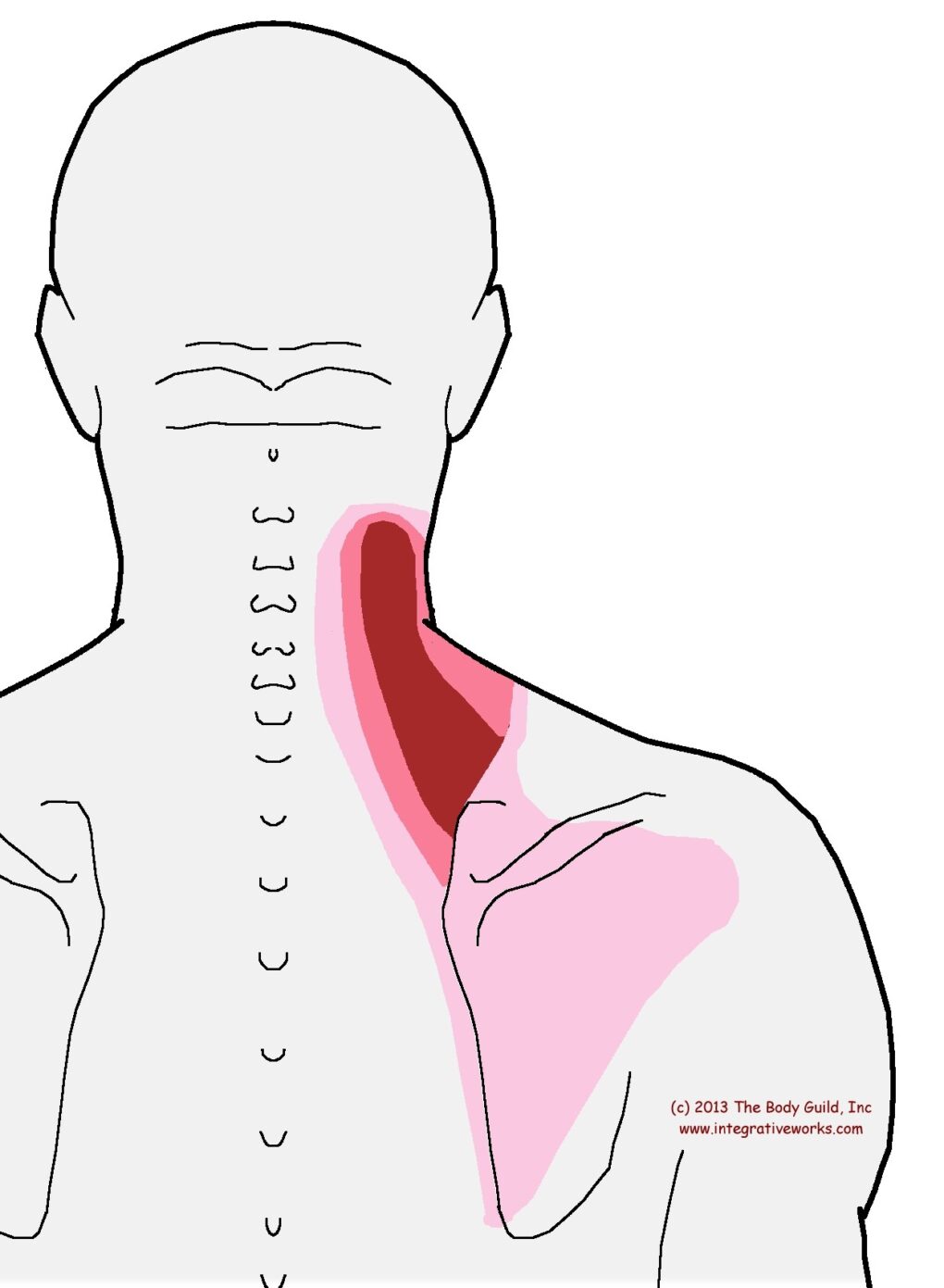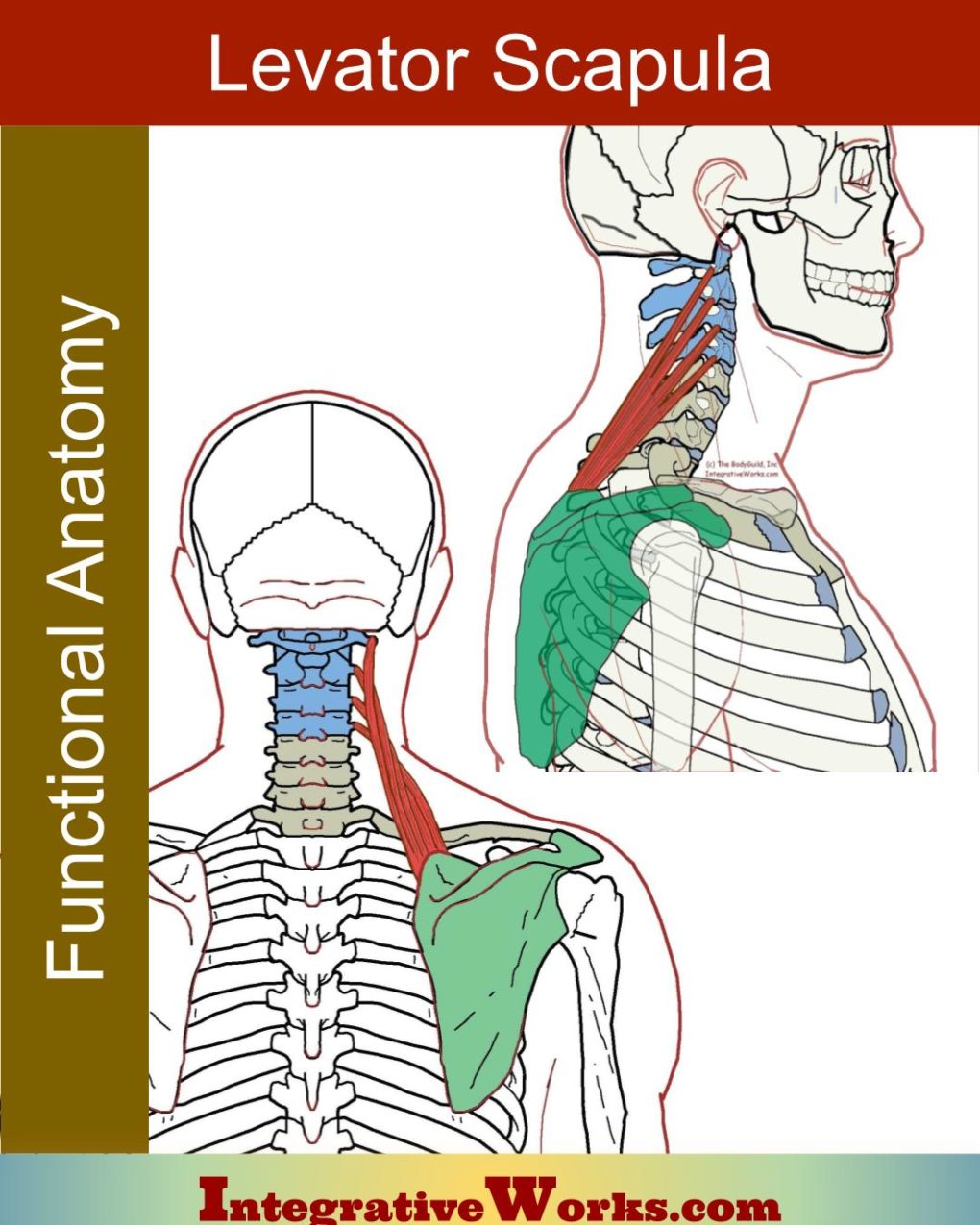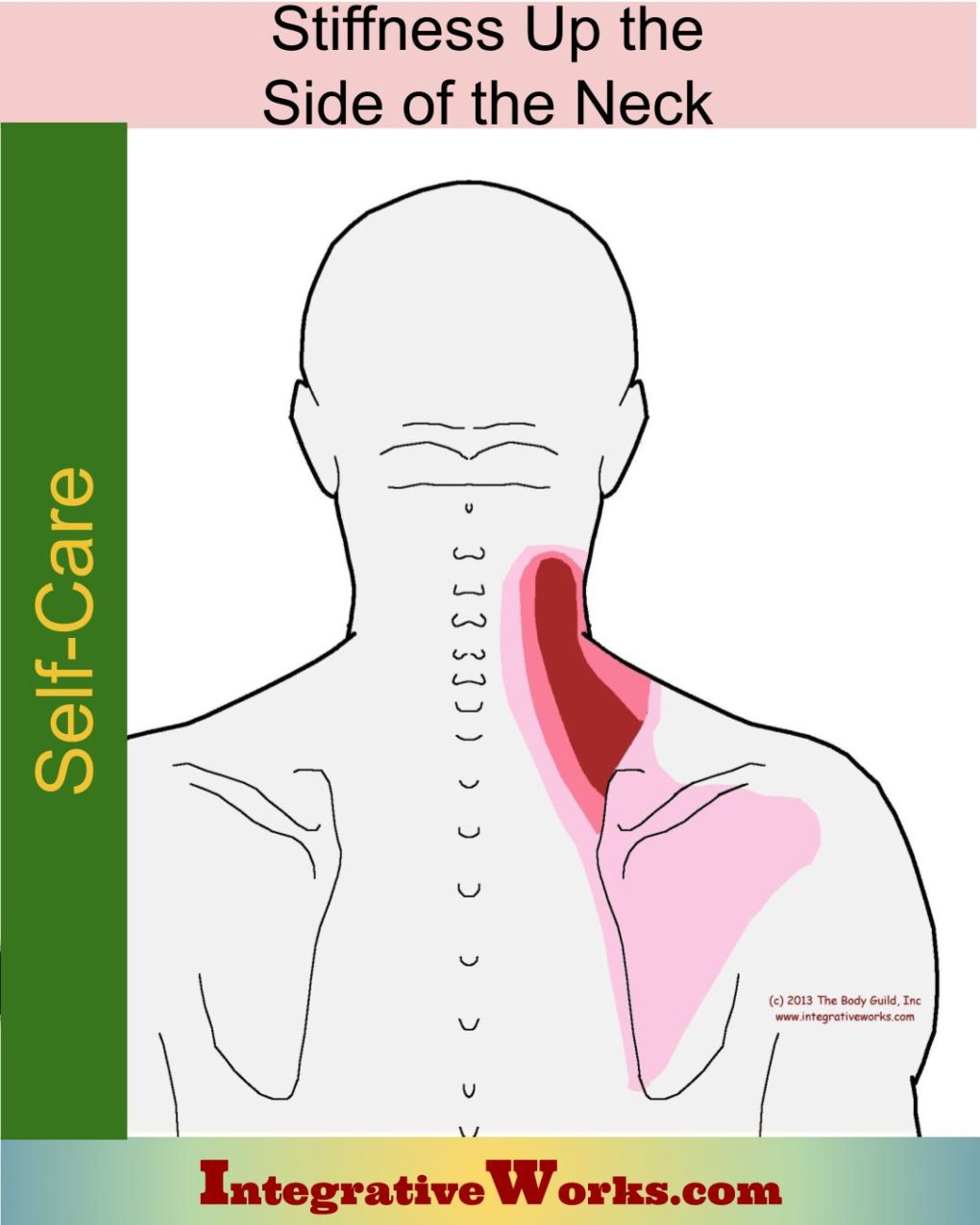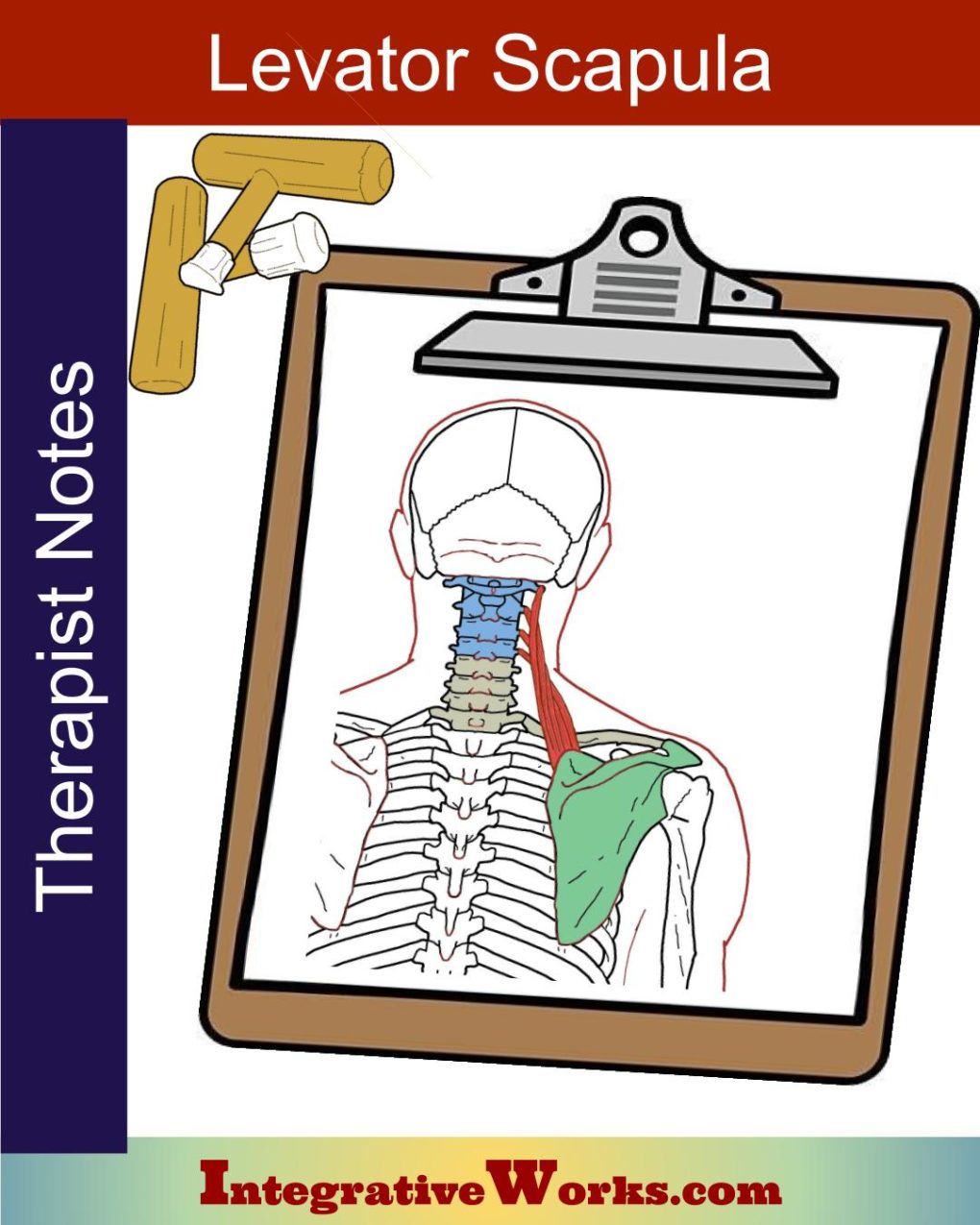Want to skip ahead?
Here’s a link to my post about
getting relief on your own.
How People Describe This Pain Pattern

Stiff Side of Neck when Turning
People complain about stiffness and pain in the side of the neck while turning their heads. Usually, they trace up and down the side of their neck while talking about it. Often, they complain about turning to look when they change lanes or tend to a child in the back seat. They usually have trouble turning it to the side that hurts but occasionally have difficulty turning it the other way. Consequently, they tend to turn to look to the side with their eyes or by turning their shoulders. This problem makes it difficult to change lanes while driving.
Picking Things Up
They also wince when lifting their shoulder with their arm beside them. Also, this pain can happen when people pick up a purse on the floor. Others stiffly reach down to get the keys and phone after standing up. They “tell” is when they tilt their head as they reach. Additionally, this trigger point can make it painful to hang a bag on that shoulder or carry a case in that hand.
Stiff Movement
They lean their head to that side when it is very restricted and stiff. Some people hike their shoulder a little instead of tilting their heads. When I’m speaking with them, they might prop that elbow on the arm of the chair to ease the tension.
Sometimes Sore Under Shoulderblade
Also, they may complain about soreness under the shoulder blade. People describe this as tension or that they “can kinda feel it” more often than as pain. When this happens, they usually describe a focus of pain on the top corner of the shoulder and radiating up as they turn.
How You Activate and Intensify This Pain Pattern

You can activate or intensify this pattern in several ways.
Slept Wrong
Most commonly, people say that they “slept wrong.” Also, I’ve created this by leaning my head to one side for a long time. For me, this happens when I’m leaning my head against something like the arm of the couch while watching a movie. The arm of the sofa may awkwardly support my head, but I don’t want to move as it would wake up the kid who I just got to sleep with.
Hobbling with Hiking Shoulder
Also, people complain about this after using a walking cane, leaning on a handrail while using the treadmill, and doing other one-sided activities where they are pushing down. One client had regular problems with this. So, I sent him to a physical therapist to get him properly fit. Additionally, they trained him to use a four-footed cane.
Visual Problems
Ill-fitted glasses also aggravate this trigger point. The lenses create little tilting and twisting movements that escalate the trigger point activity once they get active. Detailed tasks with lots of head movements also exacerbate this. This pain in the neck aggravates my favorite cookie maker during the holiday season. She sits at the table, tediously pressing little angels and stars out of dough, and chopping nuts into uniform sizes. She will twist her neck and squint her eyes until she asks me to work on it.
Typing with high, tight shoulders, especially while turning to review material also aggravates this condition. This scenario involves both activities that escalate the pain of a latent trigger point.
The Musculoskeletal Anatomy Behind Your Pain
Musculoskeletal Anatomy
This post on anatomy contains standard information about the origin, insertion, function, and innervation of muscles. Additionally, it includes information on functional considerations and anomalies.
Find Related Posts
Anatomy posts have a grid of all related posts. This includes posts on pain patterns, self-care, therapy notes, NMT protocols, cranial techniques, and cases.
This pain pattern is very is common, and most people can activate a mild version of this pattern by turning their head to the right until it stops
Getting Relief on Your Own
Clinically Proven
Self-Care Strategies
Self-Care Posts have common sections to make them easy to follow and understand:
- Activities to Avoid or Change
- Strategies for Quick Relief
- Stretches and Exercise for Longer-Lasting Relief
- Yoga Corner
Therapy Notes for Massage and Bodywork
Better Bodywork
Through Shared Expertise
Therapy Notes provide details for cranial, spinal, and local joint work. These notes also link to a traditional neuromuscular protocol.
By treating integrative components first, direct work on the muscle becomes less intense while providing longer-lasting relief.
Support Integrative Works to
stay independent
and produce great content.
You can subscribe to our community on Patreon. You will get links to free content and access to exclusive content not seen on this site. In addition, we will be posting anatomy illustrations, treatment notes, and sections from our manuals not found on this site. Thank you so much for being so supportive.
Cranio Cradle Cup
This mug has classic, colorful illustrations of the craniosacral system and vault hold #3. It makes a great gift and conversation piece.
Tony Preston has a practice in Atlanta, Georgia, where he sees clients. He has written materials and instructed classes since the mid-90s. This includes anatomy, trigger points, cranial, and neuromuscular.
Question? Comment? Typo?
integrativeworks@gmail.com
Follow us on Instagram

*This site is undergoing significant changes. We are reformatting and expanding the posts to make them easier to read. The result will also be more accessible and include more patterns with better self-care. Meanwhile, there may be formatting, content presentation, and readability inconsistencies. Until we get older posts updated, please excuse our mess.




